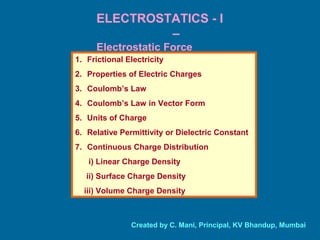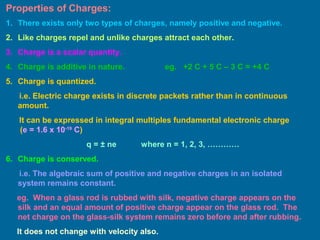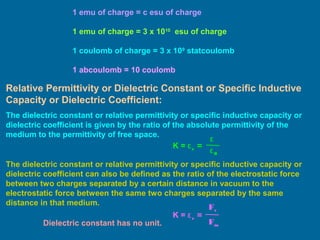This document summarizes key concepts in electrostatics including frictional electricity, properties of electric charges, Coulomb's law, units of charge, and continuous charge distribution. It explains that rubbing two materials like glass and silk can cause a transfer of electrons leaving one material positively charged and the other negatively charged. Coulomb's law states that the electrostatic force between two point charges is directly proportional to the product of the charges and inversely proportional to the square of the distance between them. The document also defines linear charge density, surface charge density, and volume charge density to describe continuous charge distributions.










